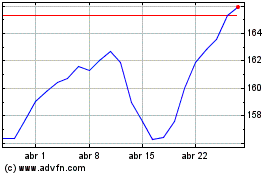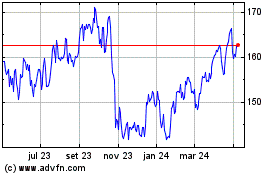Boosting Venezuelan Output Requires 'Significant Investment,' EIA Says -- OPIS
23 Outubro 2023 - 2:30PM
Dow Jones News
While the Biden administration's easing of sanctions on
Venezuela could increase in the country's crude oil production by
the end of the year, the poor state of its oil infrastructure means
the gains will likely be less than 200,000 b/d over the next year
and any additional increases will take longer and require
significant new investment, the U.S. Energy Information
Administration said Monday.
The administration's Oct. 18 move lifted most sanctions on
Venezuela's energy sector for six months and could lead to the
resumption of U.S. imports of heavy, sour crude. Several refineries
in the U.S. are configured to process the sour crude, which has
seen rising prices following production cuts by OPEC and its allies
that disproportionally impacted heavy crude supplies.
Venezuela has been under U.S. sanctions since early 2019
following a disputed presidential election, which stopped imports
of oil from the country. Those imports had been declining in recent
decades, as Venezuela's oil industry declined.
Venezuelan crude production, which had been about 3.2 million
b/d in 2000, fell to 735,000 b/d in September 2023, according to
EIA. Similarly, U.S. imports from Venezuela fell from 1.3 million
b/d in 2001 to about 510,000 b/d in 2018.
In November, the administration granted waivers allowing Chevron
Corp. to resume exporting crude from its joint venture in
Venezuela. Those exports started in January and totaled about
153,000 b/d in July, EIA said.
Chevron's exports go to Gulf Coast refineries. Any additional
U.S. imports of Venezuelan oil will also likely head to the Gulf.
Citgo Petroleum Corp., which is owned by Venezuela's national oil
company, operates three refineries in the U.S.--Lemont, Ill.; Lake
Charles, La.; and Corpus Christi, Texas. The refineries have a
combined capacity of more than 800,000 b/d and are designed to
process heavy oil, EIA said.
One way lifting of sanctions will lead to an increase in
production is by increasing Venezuela's supply of diluent.
Shortages of the material, necessary to process heavy oil, has
reduced Venezuelan output, EIA said.
Chevron should also be able to ramp up its output in Venezuela
to an average 200,000 b/d by the end of 2024, the agency said.
Similar ventures operated by ENI, Repsol, and Maurel & Prom
could add 50,000 to their output in the short term.
Together, EIA said all the ventures could increase Venezuelan
output to about 900,000 b/d by the end of next year.
After that, increases will be more difficult to come by, the
agency said.
"Years of underinvestment and mismanagement of Venezuela's
energy sector will likely limit crude oil production growth to less
than 200,000 b/d by the end of 2024, requiring more time and
investment for additional growth," EIA said.
This content was created by Oil Price Information Service, which
is operated by Dow Jones & Co. OPIS is run independently from
Dow Jones Newswires and The Wall Street Journal.
--Reporting by Steve Cronin, scronin@opisnet.com; Editing by
Michael Kelly, mkelly@opisnet.com
(END) Dow Jones Newswires
October 23, 2023 13:15 ET (17:15 GMT)
Copyright (c) 2023 Dow Jones & Company, Inc.
Chevron (NYSE:CVX)
Gráfico Histórico do Ativo
De Mar 2024 até Abr 2024

Chevron (NYSE:CVX)
Gráfico Histórico do Ativo
De Abr 2023 até Abr 2024
